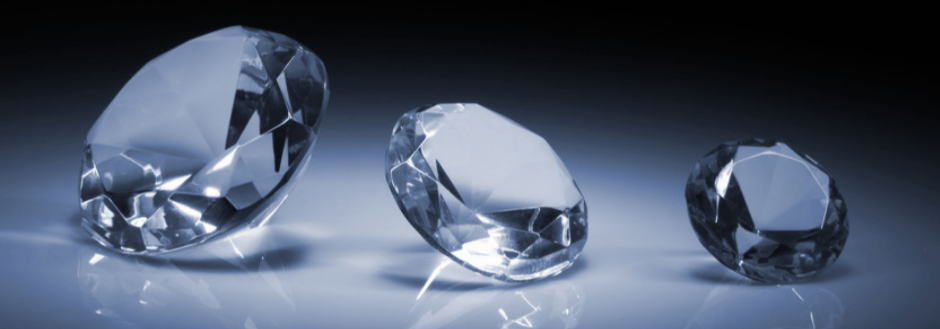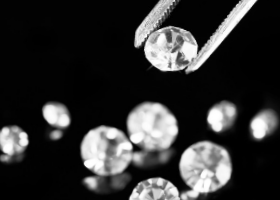
Trust the 100 years of collective experience at Crosnoe Gold & Silver

We'll help you select a beautiful, timeless diamond
Fine diamonds are among the most coveted of all gems, and investing in a diamond can be overwhelming. The staff at Crosnoe Gold & Silver in Cape Girardeau, MO, have over 100 years of collective experience .
We will help you to select a beautiful, timeless diamond , whether it be a loose stone or a custom bridal set that will be handed down from generation to generation. Call 573-334-9026 today.
Select a diamond ring
When you are ready to propose or want to mark a milestone event in your life, diamond jewelry will help to ensure that it's a moment that will never be forgotten.
Options for diamond rings
- Princess
- Round
- Marquise
- Pear
- Asscher
- Oval
- Radiant
- Emerald
The 4cs of diamond rings: Cut, color, clarity and carat weight
The value of a diamond differs widely from one stone to another. Experts evaluate every diamond for rarity and beauty using four primary guidelines called The Four C's: cut, color, clarity and carat weight.
Cut
When referring to the cut, many people may think of the shape of the diamond. The most popular shapes include Round, Oval, Square, Princess, Emerald, Baquette, and Marquise cuts. Many specialty shapes are also available.
While cut does refer to shape, it also refers to the proportions of how the diamond is actually cut. Diamonds are cut into many different shapes, reflecting not only popular taste but the proportions and quality of the rough diamond. A diamond's overall proportions, as well as the size and placement of its many reflective surfaces or facets, also play a large part in "cut," which determines the diamond’s sparkle. The consistency and balance of these can greatly affect how the stone captures light and reflects it back to the eye.
Color
With some exceptions, the most valuable diamonds are those with the least color. The color scale for transparent diamonds runs from D-F (colorless), G-J (near colorless), K-L (faint yellow), to Z (light yellow). Completely colorless diamonds are rare.
When diamonds are formed with traces of other minerals, rare and beautiful colors can result. These "fancy" colors range from blue to brilliant yellow to red, brown, pale green, pink, and violet. Because of their rarity, these colored diamonds are highly desirable and may be quite valuable.
Clarity
A diamond's clarity or brilliance is measured by its visible flaws. Those with the fewest blemishes have greater value. Tiny surface blemishes or internal inclusions -- even those seen only under magnification with a jeweler's loupe -- can alter the brilliance of the diamond. Clarity levels begin with Flawless (F & IF) and move down to Very Very Slight (VVS1 & 2), Very Slight (VS1 & 2), Slightly Included (SI1 & 2), and Included (I1, 2 & 3).
Carat Weight
The size of a diamond is measured, not by its dimensions, but by weight. One carat, the traditional unit of measure for diamonds, is equal to approximately 0.2 grams. You may also hear the weight of a diamond referred to in points. A point is equal to 1/100 of a carat; therefore, a 75-point diamonds equals 0.75 carat. Diamonds of equal weight may appear slightly different in size, depending on their depth and proportions. Because they are quite rare, larger diamonds of gem quality are much more valuable.
A diamond can only be truly perfect if you think it is beautifully perfect for you.

